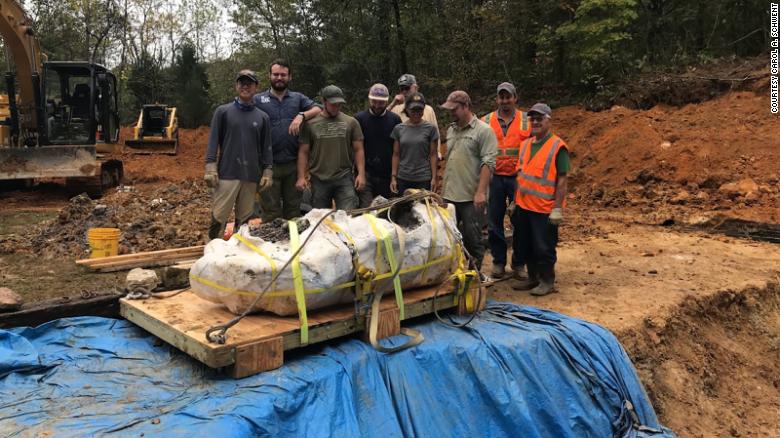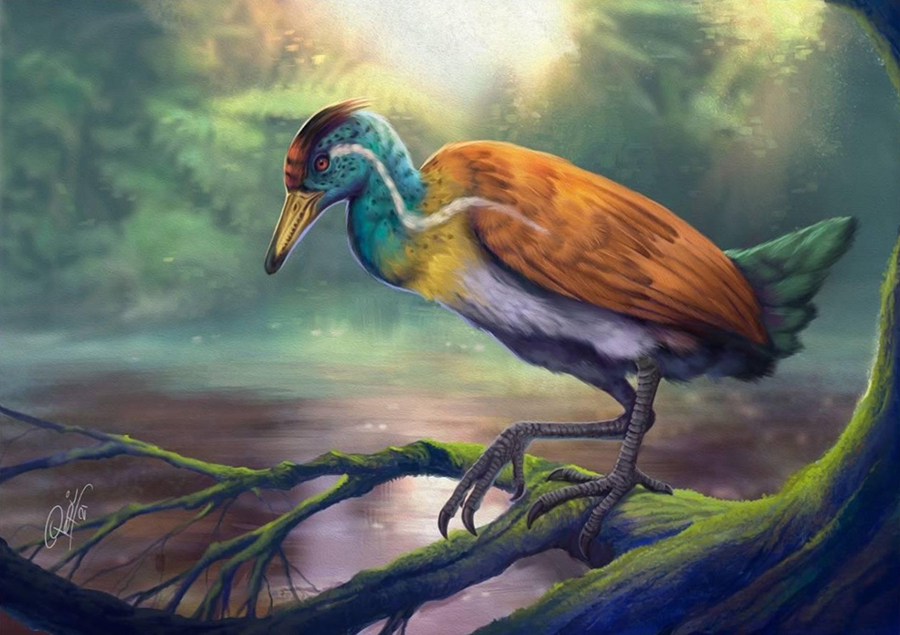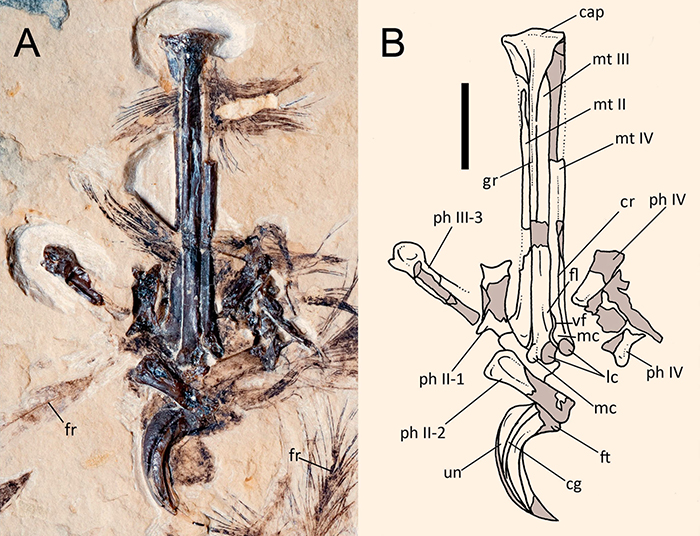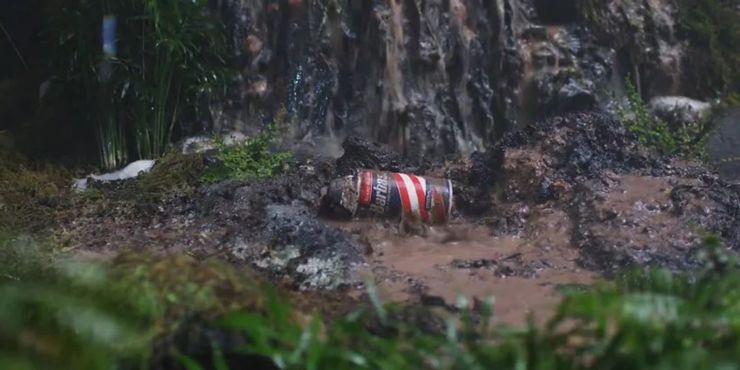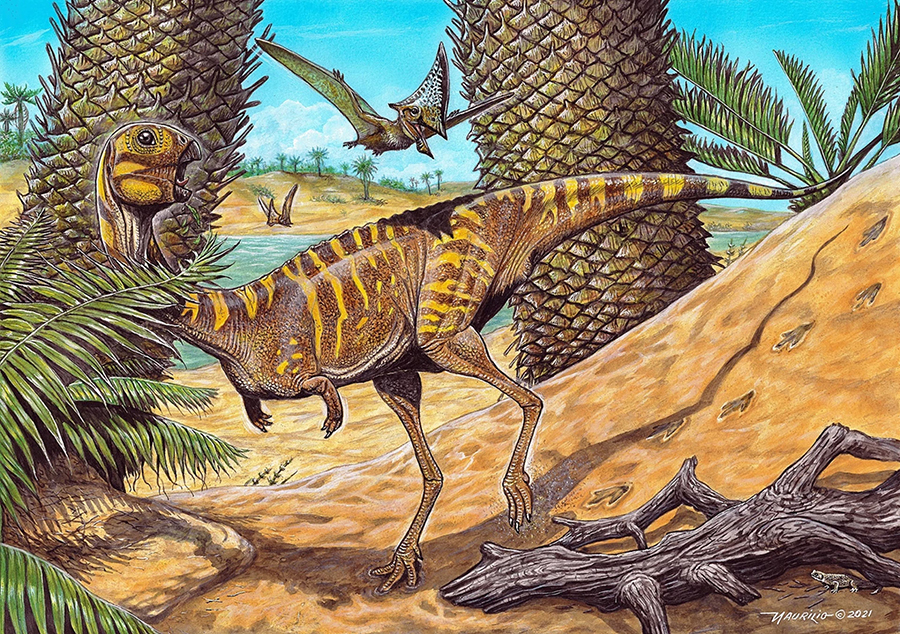Jurassic Park: Every Video Game Ranked Worst To Best

Escaping from dinosaur-infested islands is the least of some of these game's problems.
Jurassic Park was 65-million years in the making. Jurassic Park video games have been with us for twenty-eight years now (the first appearing shortly after the theatrical release of the first film in 1993).
What's particularly interesting about a franchise as diverse as the Jurassic Park films themselves is that they leave the door open for near-endless video game interpretation. Early examples were platformers/ shooters, real-time strategy sims followed, interactive educational CD-ROMs, first-person-shooters, even the Lego franchise got involved in recent years.
Unfortunately, as varied as the gameplay styles, the degree of fun to be extracted from these games has also differed greatly throughout the years.
Please also note that we were forced, regretfully, to eliminate the Jurassic Park mobile games, as there are enough of those to warrant several of their own lists, with entries there beginning as far back as the original Gameboy and Game Gear and continuing up to today in the form of iOS and Android games.
Additionally, we've been forced to cut arcade games and those that appeared only in specific regional markets, as never having encountered a given title makes it very difficult to rank.
Without further ado, let's take a look at how the Jurassic Park video game universe shakes out. Hold onto your butts!
17. Jurassic Park - Sega (1994): Sega CD

To illustrate the definition of the word "disappointment", the dictionary could just as well have included a pic of every kid in 1994 who, thinking their more powerful CD-ROM attachment would mean an enhanced version of the Jurassic Park title for the Sega Genesis, sat down to play this "game" for the first time.
These were the days when CD-Rom meant edutainment, boys and girls. Never mind action or adventure, you were in for a slightly interactive encyclopedia with some of the worst pixelated graphics this side of Dennis Nedry's workstation. Raptor fodder.
16. Jurassic Park Interactive - Universal Interactive (1994): 3DO

The short-lived 3DO wasn't about to be bested by the likes of Sega with their Sega CD Genesis attachment when it came to disappointing fans of the films.
While this game, as its very name suggests, is slightly more interactive than the former, that interactivity comes in the form of a hodgepodge of minigames like cursor shooting, tile-matching and so on.
Really being eaten by a hungry T-Rex while sitting on the toilet doesn't look so bad after a few minutes with this one.
15. Warpath: Jurassic Park - DreamWorks (1999): PlayStation

Warpath wasn't a total train wreck, and could actually be fun in a sort of illegal cockfighting ring sorta way (just with dino matchups). The trouble is it came along far too late whether the movies were your bag or video game industry trends.
2D one-on-one fighting games were nearly as extinct as the dinos themselves by 1999, and Warptah arrived well in between films. This one came and went in a flash, and we'd imagine served more to rub in the proverbial faces of aging Primal Rage fans what could have been.
14. Chaos Island: The Lost World - DreamWorks (1997): PC

Remember that time you were watching The Lost World and thought to yourself, boy what a great opportunity this film would make for a Command & Conquer style real-time strategy experience? No? Us either. But that's exactly what PC gamers got in 1997.
Overhead point of view, dozens of tiny dino sprites marching around, and occasional voice clips from the movie upon which the game is inspired all added up to an experience that was quickly forgotten. Chaos Island, however, would have made a great name for the third film.
13. Jurassic Park - Ocean (1993): DOS/Amiga

As hard as it is to imagine a world without Windows, back in 93 DOS was still a thing. If you happened to be a DOS (or Amiga) gamer at the time, Ocean had your fix with Jurassic Park.
It was played similarly to Ocean's SNES release with a slight hit in the graphical department but for gamers of the era, it provided a decent slightly overhead shooter experience coupled to Wolfenstein-like first-person segments that may have actually controlled a little better with the mouse than the SNES controller.
It's also hard to imagine a time where the PC version of a given title was far less impressive than its console counterpart.
12. Jurassic Park III: Dino Defender - Knowledge Adventure (2001): PC/ Mac

On paper, Dino Defender sounds rather interesting. It's a 2D side-scrolling romp through Jurassic Park where the player dons a cybernetic exoskeleton and must rely upon bombs and gadgets to trap all of the escaped dinos on the island.
Of course, the first time you see your character, you immediately start to wonder if you didn't boot up the wrong game. You're cartoony, blue-helmeted astronaut that fits in with the setting as well as a bright yellow Ford Explorer.
The play doesn't commit any major faux pas so much as it is rather generic in action, involves a story that has nearly nothing to do with any of the films, and was forgotten about almost instantly upon release. It would not, however, be the last we'd hear from Knowledge Adventure.
11. Jurassic Park - Sega (1993): Genesis

One of the earliest video game translations of the blockbuster film of that same year, the Genesis version of Jurassic Park was everything gamers expected out of movie tie-ins from the era and then some: 2D action, platforming, recognizable characters and locations and difficulty through the roof.
This one is perhaps most remembered for the unique player perspective, which allowed gamers to take control of Grant and a Raptor in the park. Two intertwining stories but told from opposing points of view.
The game was actually popular enough to warrant a revisit a few years later as the Jurassic Park franchise began to flex its staying power.
10. Jurassic Park - Ocean (1993): SNES
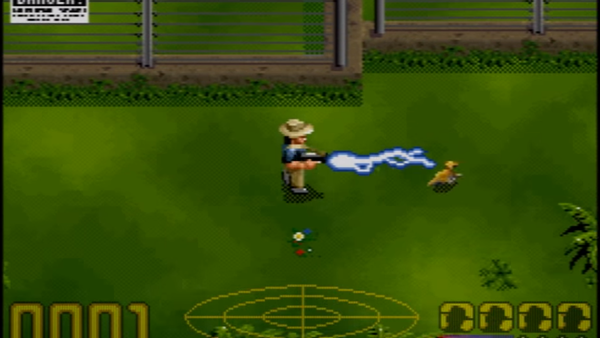
You may be asking yourself, "How different can two 16-bit versions of the same franchise really be?" Answer: very! Unlike Sega, Nintendo opted to turn to third-party developer Ocean to bring the Jurassic Park experience to their SNES platform. In 1993, we received a surprisingly forward-thinking overhead puzzler/ adventure coupled to a Wolfenstein-like first-person shooter.
The downside was that this was one of those fairly large adventure titles of the era that never bothered with things like a password system or battery save so gamers were expected to beat the entire game in a single sitting. You did get to zap roaming raptors with a cattleprod, though.
9. Jurassic Park: Rampage Edition - Sega (1994): Genesis

How do you know you have a pretty solid licensed movie tie-in title on your console? When you rerelease a year later with various enhancements to reflect the franchise's ongoing popularity.
The Rampage Edition was similar to Sega's 1993 Jurassic Park except that Grant could perform additional actions such as riding dinosaurs and using zip-lines to traverse distance. Larger levels, and more weapons and gadgets for Grant to use meant this was the definitive version of the title.
Sega taught the bitter lesson that sometimes holding off on a game you're interested in is the better choice.
8. Jurassic Park: Operation Genesis - Vivendi Universal Games (2003): PlayStation 2/ XBox/ PC
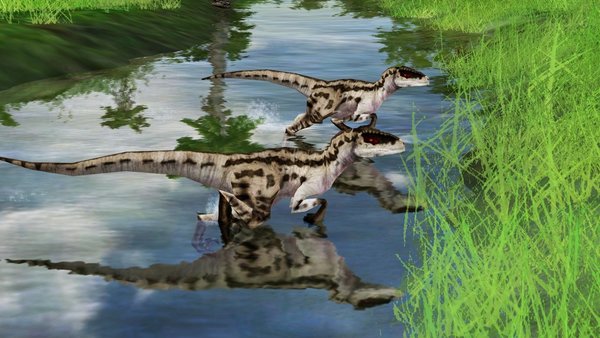
By the time Operation Genesis came on the scene in 2003, the Jurassic Park movie franchise had simmered down considerably and developers were looking to do something different with the source material. What resulted was a massive construction and management simulation game.
If you are the type of player who always felt you had more in common with InGen than characters like Dr. Grant or Ian Malcom, Operation Genesis was the game you were waiting for. It played like a cross between Sim Theme Park and Zoo Tycoon, with rewards coming in the form of a smoothly running park and happy tourists. Also, alive tourists.
You might think resource management doesn't sound all that exciting but this is worlds better than a Jurassic Park themed Minecraft mod.
7. Jurassic Park: Dinosaur Battles - Knowledge Adventure (2002): PC

At first glance, this one sounds like a PC version of 1999's Jurassic Park Warpath - where you line up dino deathmatches and perform combo movies to try and pull upsets like Ankylosaurus demolishing T-Rex.
And, while there is a real-time dino battle element at play here, there is also emphasis on sim-like planning, as you literally build your prehistoric combatant by gene splicing.
Just like InGen itself, you get to challenge nature itself with your twisted genetic creations to build the ultimate dino pit fighter. Just don't get crazy and combine raptor DNA with that of T-Rex and a chameleon or you'll ruin the fourth movie for yourself.
6. The Lost World: Jurassic Park - Sega (1997): Genesis

In 1997, most of the world had moved on to the 32-Bit (and 64-Bit) platforms, but the Genesis was still trucking along. Sega, aware of how well it had done twice before with Jurassic Park-themed Genesis games, decided to treat gamers to a dedicated sequel based on the then-new film.
This time the player was just a generic character charged with the unenviable task of cleaning up the island of dinos. Two players could work together in Cooperative Mode or work against each other in Competitive Mode. Plus new vehicles made their way into the franchise like the hovercraft.
The viewpoint had changed from the earlier Genesis titles to a more top-down perspective similar to the first SNES Jurassic Park but retained the action orientation of the Sega entries.
5. Jurassic Park 2: The Chaos Continues - Ocean (1994): SNES

At the very tail-end of 1994, PlayStation and Saturn were beginning to steal the magazine headlines but another Jurassic Park game quietly found its way to the aging SNES.
Ocean returned to develop a gaming experience that resembled the original Genesis version of the source material than the first SNES title - with a side-scrolling, shooter action while playing the role of Dr. Grant himself.
Run 'n gun simplicity proved surprisingly conducive to the Jurassic Park setting, because, really, who wouldn't want to play Contra on a jungle island full of dinosaurs?
4. Jurassic Park: The Game - Telltale Games (2011): PlayStation 3/ Xbox 360/ PC/ Mac

Back in 2011 when JP: The Game was released, the label "The Telltale Edition" wasn't yet a thing. These days it's synonymous with titles that are more like interactive movies with quick-time events and crucial decision-making responsibilities that alter the outcome of the narrative.
This one is an episodic graphic adventure based exclusively on the 1993 film - and while it is a very acquired style taste, controlling the multitude of variables of a movie you probably already have nearly memorized makes for some very unique outcomes.
While Telltale has yet to revisit the Jurassic Park franchise, this style game has since become their staple.
3. Jurassic World Evolution 1 & 2 - Frontier (2021): PlayStation 4/ Xbox One/ Nintendo Switch/ Microsoft Windows

Jurassic World Evolution (the movies having ditched the "Park" designation for bigger things) is a pseudo-sequel to 2003's Operation Genesis - a construction and resource management sim where the end goal is to create a functional park.
In late 2021 we received the sequel Jurassic World Evolution 2, which builds upon the predecessor in nearly every category: Deeper park management mechanics, a larger dino roster (84 species), and, as you'd expect when jumping to the next generation of console hardware, improved visuals.
The game's locations, models and effects are simply gorgeous and the variables the player can control are nearly limitless, whether or not the experience will prove rewarding has all to do with the player's appreciation for the simulation/ farming experience.
Missions are fuelled by the desire to unlock more park resources, a wider range of animal species, new skins, textures and so on. At the end of the day, I consider the Jurassic World Evolution series a more expansive and gorgeous continuation of what Operation Genesis promised back in the early 2000s.
2. Lego Jurassic World - Telltale Games (2015): Windows/ 3DS/ PlayStation 3, 4, Vita/ Wii U/ Xbox 360, One

Perhaps the greatest thing about Lego Jurassic World, aside from the unique brand of all-ages appropriate humor that is the Lego game gimmick, is the fact that you play through the first four films in succession.
Like all Lego titles, the backbone of the game is simple puzzle-solving to unlock the next area for exploration, all the while triggering key moments of the film franchise to be realized in their brick-infused glory. Multiplayer is typically preferred to relying on AI-powered sidekicks and there are limitless bonuses to collect along the way.
The biggest downside, however, is that it never sways far from the proven Lego video game formula - meaning if you've burned yourself out on any of the dozens of entries prior to this one, it's unlikely Lego Jurassic World will be the one to rekindle your flames of passion.
1. The Lost World: Jurassic Park - DreamWorks (1997): PlayStation / Saturn

While The Lost World is in no danger of being considered anyone's favorite movie of the franchise, the 32-bit incarnation of the franchise earns our top spot for offering up a surprisingly tricky 2.5D take on the source material that opens with players scampering around as a tiny Compy before allowing them to advance through the evolutionary ranks.
By the time the romp is over, you will have played as everything from a lunge-happy Raptor to a human hunter, human prey to the mighty T-Rex itself.
The game wasn't critically praised upon release and has largely slipped through the cracks in the years since, but playing it now is a reminder of a simpler time in gaming, when platforming, shooting, timing were all it took to handle Isla Sorna like a boss.
Source: https://whatculture.com/





